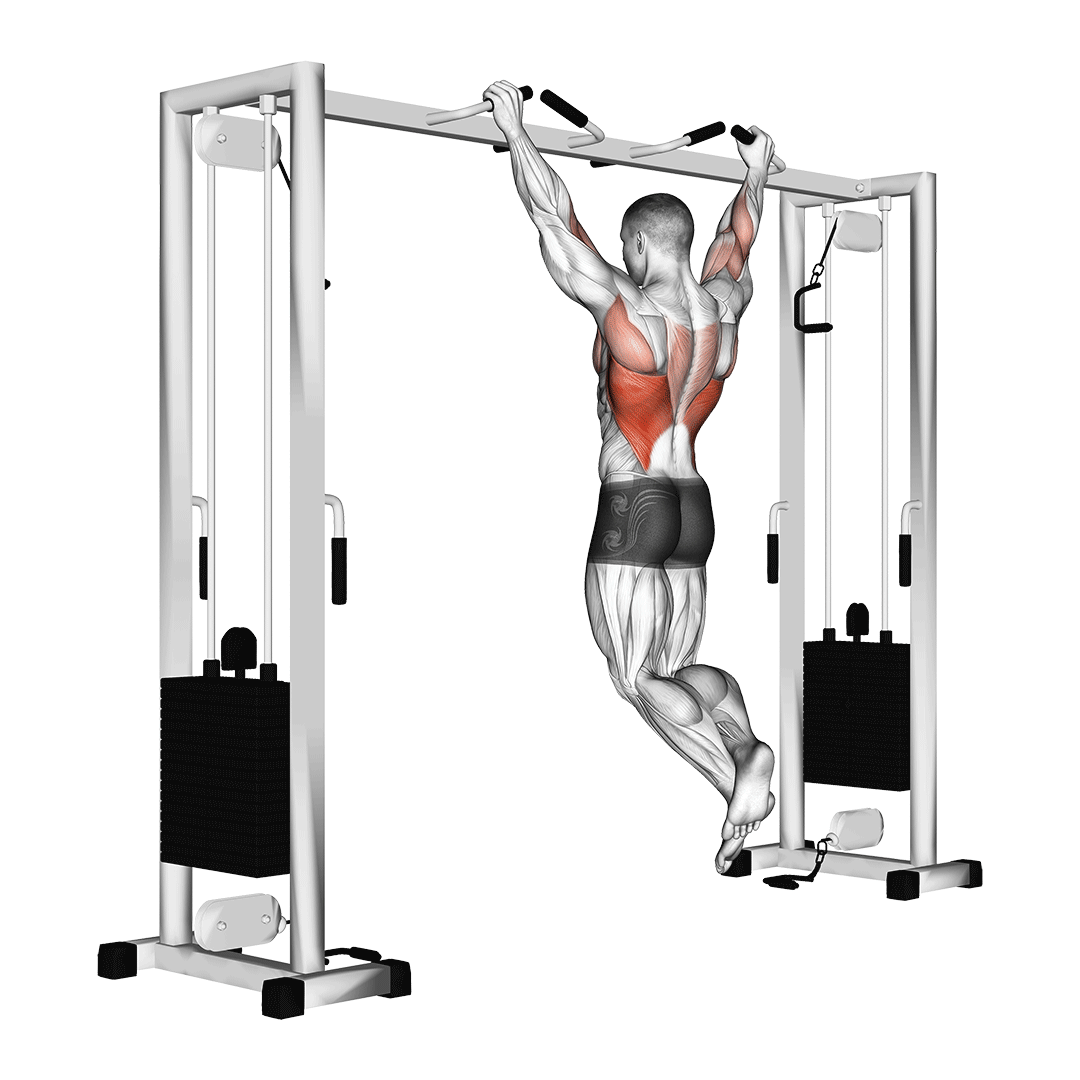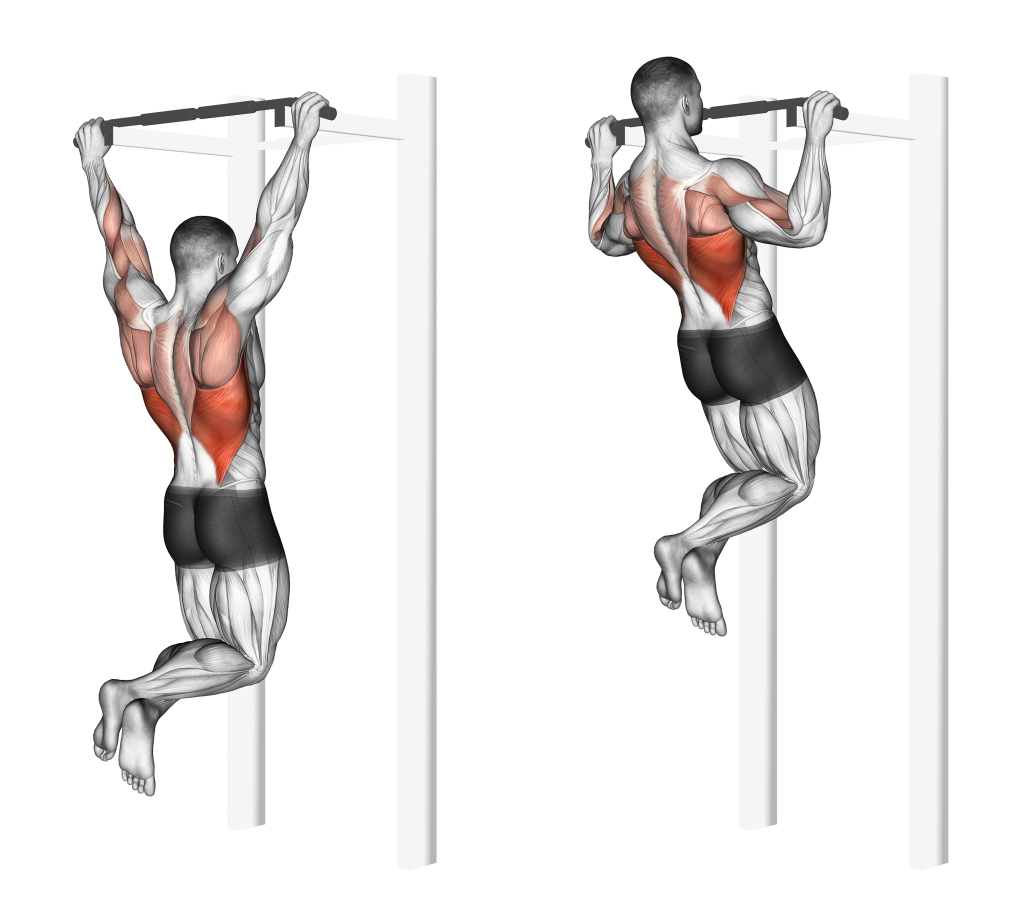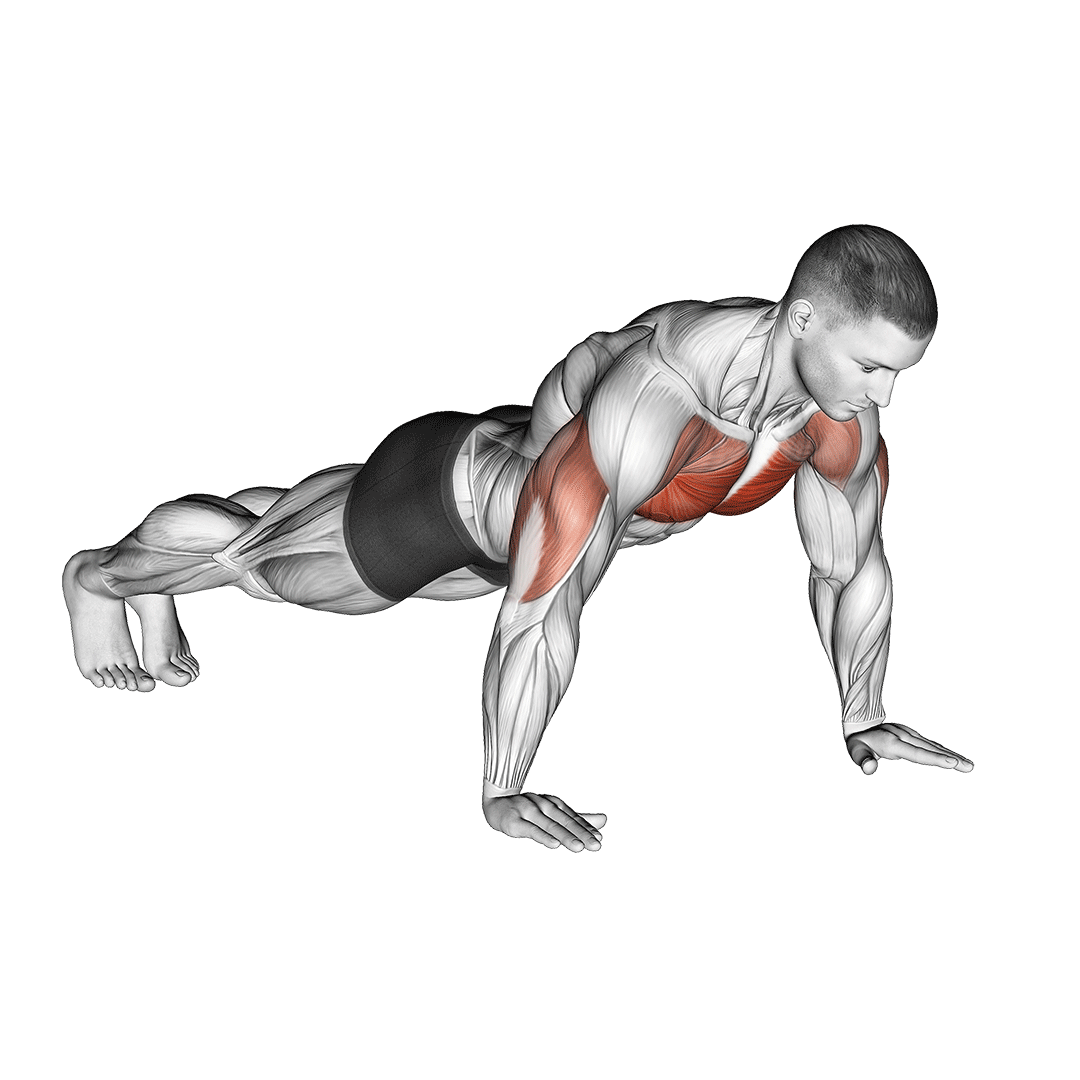Do Push Ups Help With Pull Ups: Here's Why Not
Two of the most iconic bodyweight exercises are the push-up and the pull-up - grossly different exercises in both appearance and mechanics, but is it possible for them to actually synergize?
In truth, whether or not push-ups can improve pull-up performance is a nuanced and highly complex question, as it requires us to investigate not only muscular antagonistic behavior, but also more abstract factors like task-specific carryover and accumulative fatigue within a workout.
If one were to condense all this information into a short answer, it would be that no - push-ups do not necessarily help with pull-ups; At least, not in a direct and immediately measurable context.
What are Pull-Ups?
Pull-ups are a multi-joint compound exercise most often performed with only the exerciser’s own body weight as a source of resistance.

They are frequently encountered in workouts meant to target the muscles of the back and biceps, and are programmed in low-to-moderate volume sets for all sorts of athletic purposes.
Muscles Worked by Pull-Ups
Pull-ups place a particular emphasis on the latissimus dorsi muscles, but will also train other muscles like the biceps, trapezius, rhomboids, posterior deltoid head and teres major to a similar level of intensity.
How-To:
Hanging with both hands from an overhead pull-up bar, the exerciser will contract the muscles of their back and bend at the elbows, drawing their head over the bar. The lower body must remain still and the core contracted so as to create a stable movement with no additional momentum.

Once reaching the apex of the repetition, they will then reverse the motion, slowly lowering themselves until they have returned to the hanging position, arms fully extended overhead.
What are Push-Ups?
Push-ups are a multi-joint compound exercise primarily featuring body weight alone as the driver of intensity.

Push-ups are most often programmed for high volume sets, and are seen as the “go-to” upper body exercise for individuals without access to equipment or the ability to perform higher intensity exercises.
Muscles Worked by Push-Ups
Push-ups are a compound exercise, and as such will train not only the pectoral muscles, but also the triceps brachii, the deltoid muscles and the serratus in a large range of motion.
How-To:
Lying on all fours in a plank position, the exerciser will bend at the elbows and slowly lower their chest to the ground, stopping several inches away.
Pushing through the palms of their hands, they will once again extend their elbows, returning to the original plank position and thereby completing the repetition.
What is the Athletic Carryover and Specificity?
In sports science, the term “carryover” refers to the capacity of an exerciser to transfer the skills or physical developments from one training modality to another activity.
A good example of this is the capacity for back squats to improve seemingly unrelated activities like sprints or high-jumps - both of which receive “carryover” due to the back squat improving the exerciser’s leg strength and bodily control.
Conversely, the term “specificity” refers to how performing a certain action or activity will improve an individual’s ability to perform the exact same action in the future.
This is often seen in athletes where, with each practice session, they become more skilled at their chosen sport in a way that carryover from other forms of training would not otherwise produce.
Think of a basketball player learning to shoot three-pointers - it is unlikely that weights would directly improve their capacity to do so.
How Do Push-Ups Provide Carryover to Pull-Ups?
Resistance exercises like the pull-up are executed with more than just raw muscular strength - they also require technical familiarity with exercise form, a solid sense of bodily coordination and the subconscious capacity of the central nervous system (CNS) to recruit the skeletal musculature.
While it is indeed true that push-ups do not train the same muscles as pull-ups, they can help reinforce an individual’s capacity to control their own body through CNS adaptation - as well as help them practice some of the more basic components of good resistance exercise form.
What this means is that push-ups do not provide a direct carryover to pull-ups, but can otherwise reinforce pathways and skills that are needed to execute pull-ups effectively.
Pull-Ups and Specificity: Why Push-Ups Do Not Help
Though we’ve established that push-ups can help with pull-ups in an indirect manner, it also goes without saying that the two exercises are completely different from a larger perspective:
They do not feature similar mechanics, nor tempo, or even muscular recruitment patterns, and as such do not provide any sort of specificity of training whatsoever.
Though some may argue that pull-ups and push-ups both feature secondary recruitment of the core, deltoids or pectorals - these are not immediately useful in terms of specificity, and instead fall more under the category of muscular carryover.
In truth, because of the rather unique form of pull-ups, the only way to directly improve pull-up execution is by performing pull-ups.
If greater pull-ups specificity is required due to poor form or the need for a competitive edge, performing exercises meant to achieve such goals like negative pull-ups or other pull-up variations may be best.
Antagonist Muscles of Push-Ups and Pull-Ups
In anatomy and physiology, antagonist muscles are a pair of muscles that, when one is recruited, the other reacts in tandem. This is seen in nearly all dynamic movements, with a good example being that of the biceps and triceps; when one is contracted, the other relaxes.
This is known as a muscular agonist and antagonist pairing, respectively.
The concept of muscular antagonists applies very much to pull-ups and push-ups, as they target the opposite sides of the body and in fact complement one another in terms of training programming.
Though it may seem that an antagonist muscle is unimportant because it is not contracted during a movement, they are used by the body in order to help stabilize and control the agonist muscle and the entire movement as a whole - something that is quite important for pull-ups, as performing the exercise with excess momentum is considered a major error in form.
Pull-Ups vs. Push-Ups: Antagonist Muscles
Pull-ups are known to recruit such muscles as the trapezius, biceps and latissimus dorsi - of which require muscles like the pectorals, triceps and deltoids to act as antagonists.
One may note that these latter antagonist muscles are all directly trained by push-ups, meaning that push-ups are essentially an antagonist movement to the pull-up, so to speak.
Keeping this in mind, we can come to the conclusion that it is important to perform push-ups to strengthen the antagonist muscles needed to stabilize and control the movement of a pull-up, providing an oft-overlooked point to the question of whether push-ups help with pull-ups.
How to Program Push-Ups and Pull-Ups Together
Because of the indirect carryover and muscular antagonism present between push-ups and pull-ups, many at-home exercisers and athletes may wish to program the two exercises into the same workout.
The fact that they largely recruit different muscles allows for this to occur, and may even prove beneficial in terms of overall work capacity and time-consumption.
Exercise Order
It goes without saying that pull-ups are far more difficult than push-ups, and as such it is a good idea to place pull-ups earlier in the workout than push-ups. Thanks to the drastically different muscles worked, there should be no fatigue present, allowing each exercise to be performed to the athlete’s fullest capabilities.
Note that this may not be true for variations, alternatives or accessories present between either exercise within the workout.
Sets and Repetitions
Because push-ups are performed for far more volume than pull-ups, it is best to program them accordingly.
Ideally, pull-ups will be among the first exercises within the workout, and programmed for 3-5 sets of RPE 8, meaning that there is enough volume present to fatigue the exerciser but still avoid the point of total exhaustion, of which may affect push-up performance later in the workout.
For push-ups, it is best to perform 2-4 sets of RPE 7-8 on account of the high volume involved.
Frequently Asked Questions (FAQ)
How Many Push-Ups Equal One Pull-Up?
Push-ups and pull-ups are two entirely different exercises and as such are incomparable in most contexts.
However, one study examining the push-to-pull strength ratio of modern adults finds that the majority of individuals have a 1.5-2.7:1 strength ratio of push muscles to pull muscles, respectively.
This could mean that as little as 1.5 push-ups can equate to a single pull-up, though this number is only rough conjecture at best.
How Do I Build Strength to Do Pull-Ups?
For novice exercisers without the needed strength to do a pull-up, it is possible to instead perform assisted pull-ups or to use the lat pull-down machine to strengthen the muscles of the back.
For exercisers who can do a few pull-ups, but not to any meaningful volume, doing negative pull-ups is a more efficient choice.
Why are my Push-Ups Not Improving?
If you are consistent with your training but find that your body isn’t improving, it is a good idea to examine your diet and recovery.
Muscles need time and resources to grow, and if an individual has reached a plateau in their training, it is likely not their actions in the gym that are to blame, but instead their nutrition and recovery methods.
Bottomline - Do Push-Ups Actually Help With Pull-Ups?
In a direct and immediate sense? No, push-ups do not help with pull-ups.
However, taking all relevant information into account, we can see that push-ups can indirectly improve pull-ups through the improvement of soft skills, non-muscular physical developments and by strengthening the few muscle groups shared between the two exercises.
It goes without saying that only training half of the body is a poor idea, and that bodyweight athletes will wish to include push-ups in their program just as much as they do pull-ups, regardless of whether there is direct carryover or not.
References
1. Negrete RJ, Hanney WJ, Pabian P, Kolber MJ. Upper body push and pull strength ratio in recreationally active adults. Int J Sports Phys Ther. 2013 Apr;8(2):138-44. PMID: 23593552; PMCID: PMC3625793.
2. Rickaby, Daniel; Wright, Glenn A. Agonist- Antagonist Muscle Balance: Effects On Explosive Upper-Body Exercise In Trained Male Athletes. Journal of Strength and Conditioning Research 24():p 1, January 2010. | DOI: 10.1097/01.JSC.0000367203.95289.b6
